
How to Choose and Prepare for Your First Yoga Teacher Training in Rishikesh — The Yoga Capital of the World
Rishikesh, nestled in the Himalayan foothills and hugged by the sacred Ganges River, isn’t just a destination — it’s a spiritual pilgrimage for yoga practitioners from across the globe. Known as the Yoga Capital of the World, this sacred city has drawn seekers and sages for centuries. If you’re considering doing your first Yoga Teacher Training (YTT) in Rishikesh, you’re stepping into a deeply transformative space.
But choosing the right program — and preparing yourself mentally, physically, and logistically — can feel overwhelming. This comprehensive guide will help you make informed decisions and get ready for a life-changing experience.

Why Choose Rishikesh for Your First Yoga Teacher Training?
- Authentic Yogic Tradition
Rishikesh offers a direct connection to ancient yogic traditions. Many of the schools and ashrams here follow classical Hatha, Ashtanga, and Kundalini lineages — not the gym-based yoga often seen in the West.
- Spiritual Energy
Practicing yoga in Rishikesh is unlike anywhere else. The energy of the Himalayas, the flow of the Ganga, and the presence of long-standing ashrams create an atmosphere that naturally fosters inner growth.
Many Indian yoga teachers in Rishikesh are deeply rooted in yogic philosophy and Sanskrit studies. You’ll learn from experienced masters with decades of experience in both practice and teaching.
- Affordability
Compared to YTTs in Europe or North America, Rishikesh offers more affordable packages — often including food and accommodation — without compromising on quality.
How to Choose the Right Yoga School in Rishikesh
- Check RYT Certification (Yoga Alliance)
Ensure the school is a Registered Yoga School (RYS) under Yoga Alliance. This ensures that upon graduation, you can register as a Registered Yoga Teacher (RYT 200) — a global standard for teaching.
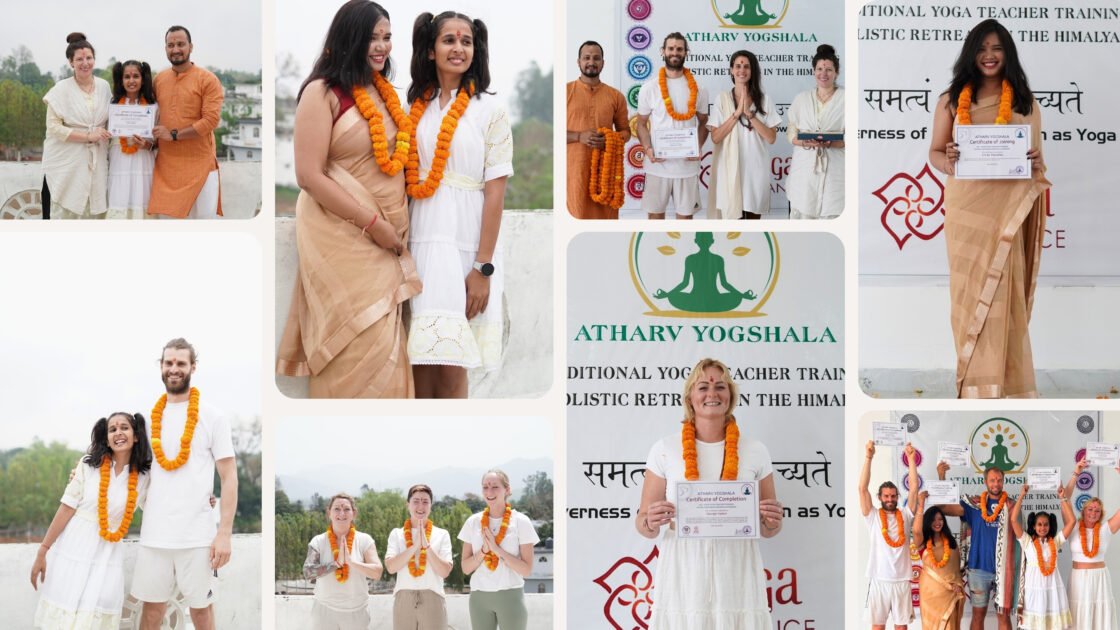
✅ Tip: Visit Yoga Alliance’s website to verify the school’s registration.
- Decide on the Yoga Style
Do you resonate more with:
• Hatha Yoga – Traditional, slower-paced, deeply rooted in alignment and breath?
• Ashtanga/Vinyasa Flow – More dynamic, athletic, and structured?
• Kundalini Yoga – Energetic practices involving breath, mantra, and meditation?
Each school tends to specialize in a style. Read the curriculum carefully.
- Research the Teachers
Look into the lead instructors’ bios. Are they Indian masters steeped in yogic texts and philosophy? Or are they more anatomy-focused? A balanced team offering both East and West perspectives is ideal.
👁️ Red flag: If teacher bios are missing or vague, reconsider the school.
- Read Verified Reviews
Check Google, Yoga Alliance, and independent review platforms. Don’t just look at ratings — read detailed reviews to understand the strengths and weaknesses.
💬 Ask questions in Facebook groups or forums like “Yoga Teacher Training Rishikesh Recommendations.”
- Class Size
A smaller group (10–20 students) means more personalized attention and better alignment corrections. Some schools have classes of 40+ which can feel crowded.
- Location and Accommodation
Some schools are nestled near the Ganges or up in the hills. Choose what suits your preference:
• Quiet hills = solitude, silence
• Near Laxman Jhula = more cafés, shopping, community
Check photos of the accommodation, and confirm:
• Is it clean?
• Is WiFi available?
• Are rooms private or shared?
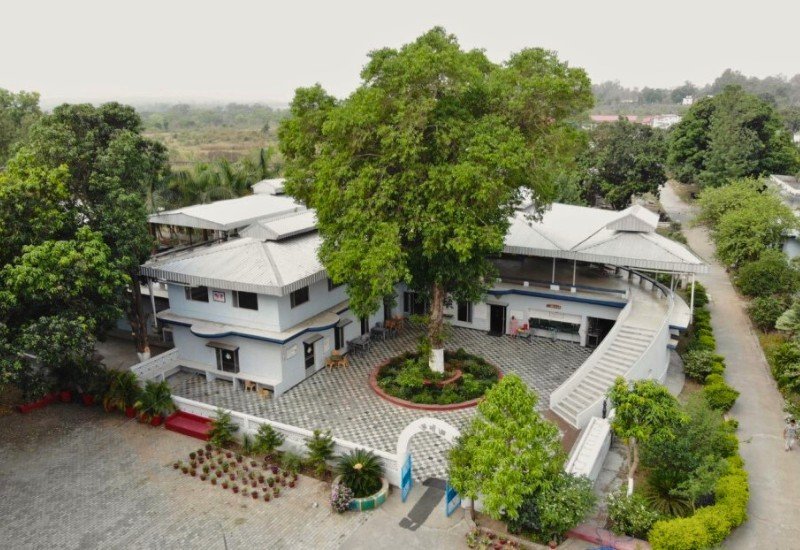
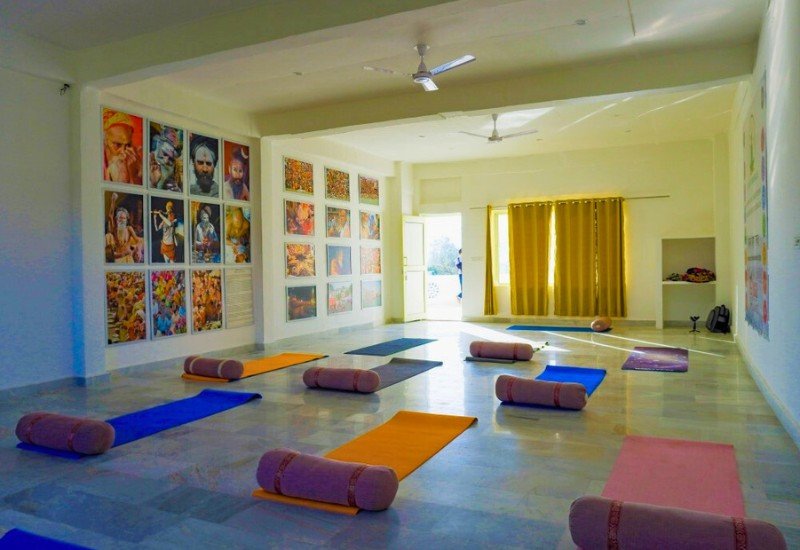
What to Expect in a 200-Hour YTT in Rishikesh
Most YTTs run 23–28 days. The schedule is typically intense but deeply immersive.
Sample Daily Schedule:
• 05:30 AM – Wake up
• 06:00 AM – Meditation / Pranayama
• 07:30 AM – Asana (morning practice)
• 09:00 AM – Breakfast
• 10:00 AM – Philosophy / Anatomy
• 01:00 PM – Lunch
• 02:00 PM – Self-study / Rest
• 03:30 PM – Alignment & Teaching Methodology
• 05:00 PM – Asana (evening)
• 07:00 PM – Dinner
• 08:00 PM – Group discussions / Kirtan / Satsang
• 09:00 PM – Lights out
It’s a physical, mental, and emotional bootcamp that’s deeply rewarding if you’re prepared for it.
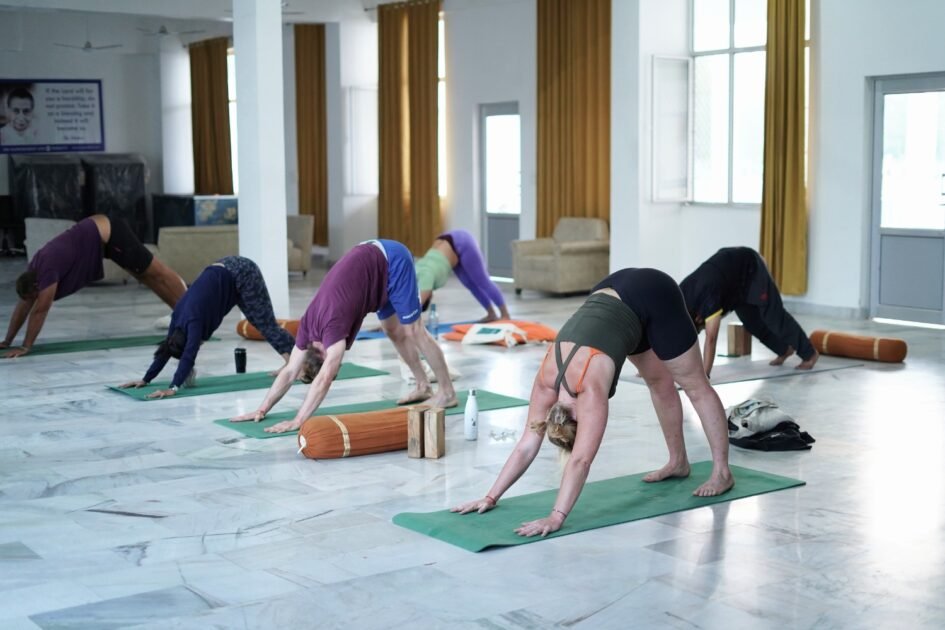
How to Prepare for Your First YTT in Rishikesh
- Build a Consistent Yoga Practice
Try to practice asana 4–6 times a week for at least 2–3 months before your training. Familiarity with Sun Salutations (Surya Namaskar), basic standing poses, and seated postures will help you immensely.
Focus on:
• Body awareness
• Breath control (pranayama)
• Developing patience and consistency
- Read Yogic Texts
Familiarize yourself with basic yogic philosophy. Recommended beginner texts:
• The Yoga Sutras of Patanjali
• Bhagavad Gita
• Hatha Yoga Pradipika
• Light on Yoga by B.K.S. Iyengar
📚 Many schools will include these in their curriculum, but reading ahead gives you a deeper foundation.
- Practice Meditation
Start with 5–10 minutes a day. Rishikesh emphasizes internal practices. You’ll experience meditation, chanting, and mantra — so developing stillness and focus is key.
Try:
• Mindfulness meditation
• Guided meditations
• Breath awareness
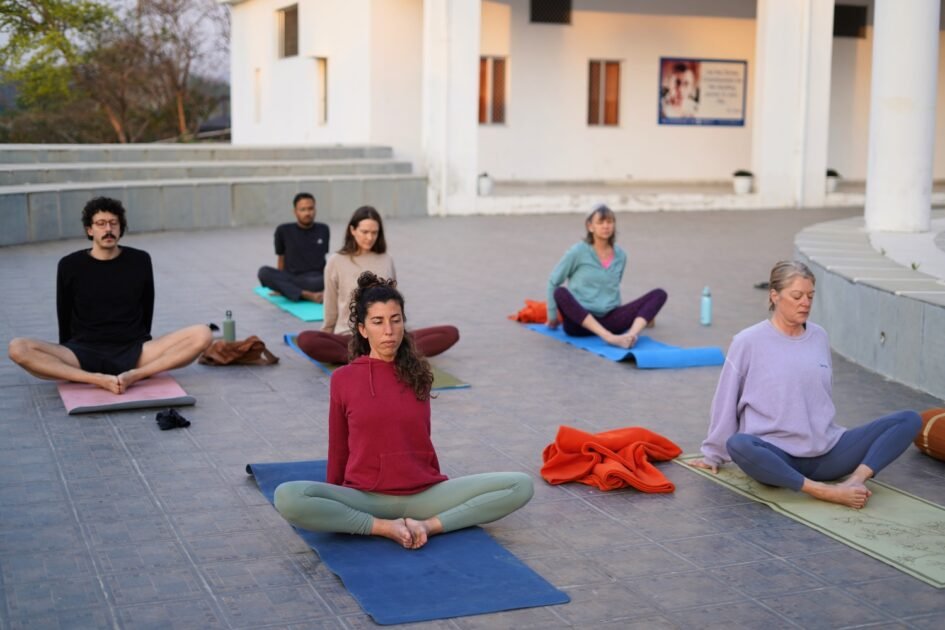
- Get Physically Ready
Training in India can be intense — physically and climatically. Begin strengthening your body with:
• Regular asana practice
• Walking or light cardio
• Shoulder and hip mobility
Don’t worry — you don’t need to be “advanced,” just ready to practice with discipline.
- Understand Dietary Shifts
Most YTTs in Rishikesh serve sattvic (vegetarian) food. Meals are light, simple, and Ayurvedically balanced — without coffee, meat, or processed sugars.
You may want to:
• Wean off caffeine/alcohol/sugar 2–3 weeks before
• Begin eating more plant-based meals
• Hydrate and flush out toxins
- Gather Required Materials
Most schools provide books and props, but check with them directly. You may need to bring:
• Yoga mat (or confirm if provided)
• Notebook + pens
• Light clothes (modest for ashram culture)
• Refillable water bottle
• Shawl or sweater (early mornings can be chilly)
• Natural mosquito repellent
• Toiletries (eco-friendly options are best)
Cultural Etiquette and Mindset Tips
- Dress Modestly
Rishikesh is sacred — wear clothing that covers shoulders, chest, and knees, especially in temples or public spaces. Loose, breathable fabrics are ideal.
- Respect Local Traditions
• Remove shoes before entering homes or yoga halls
• Refrain from public displays of affection
• Be polite and curious — locals are often warm and helpful - Leave Expectations Behind
Transformation doesn’t happen on your schedule. Be open to challenges — emotional releases, homesickness, or mental resistance are normal. They’re part of the spiritual cleanse.
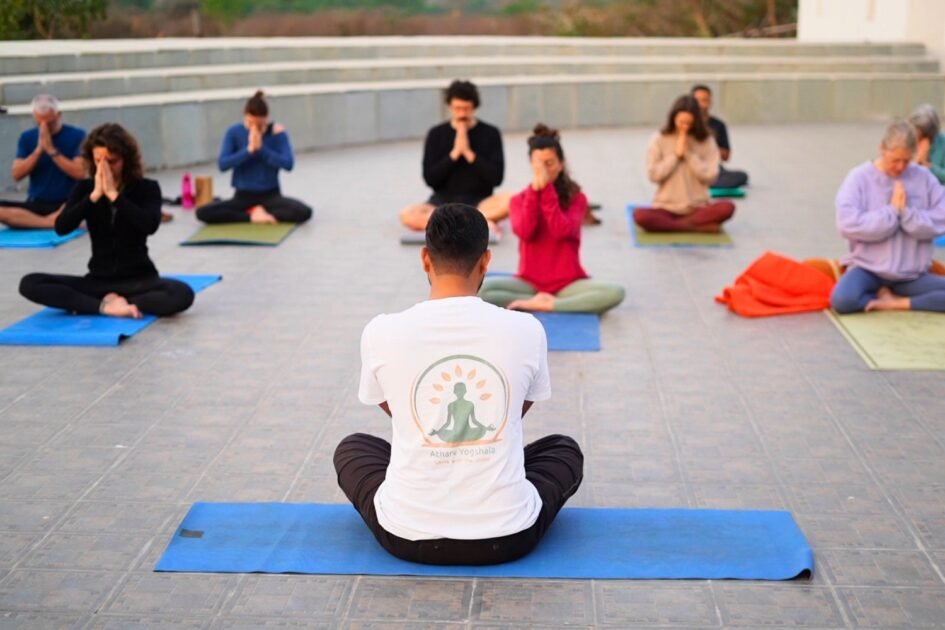
Choosing Between Seasons: When to Go
✅ Best time: October – March
• Cooler, clearer skies
• Less humidity
• Easier to focus
🛑 Avoid: June – August
• Monsoon season
• Very humid
• Some schools shut down or reduce class sizes
What Happens After the YTT?
After your 200-hour training, you’ll:
• Be eligible to register as RYT-200 with Yoga Alliance
• Have the foundation to teach beginner and mixed-level classes
• Feel more connected with your body, breath, and purpose
You may also:
• Stay in Rishikesh for further study (300-hour, Ayurveda, or meditation retreats)
• Begin teaching right away (some schools offer internships)
• Go home and begin sharing your practice
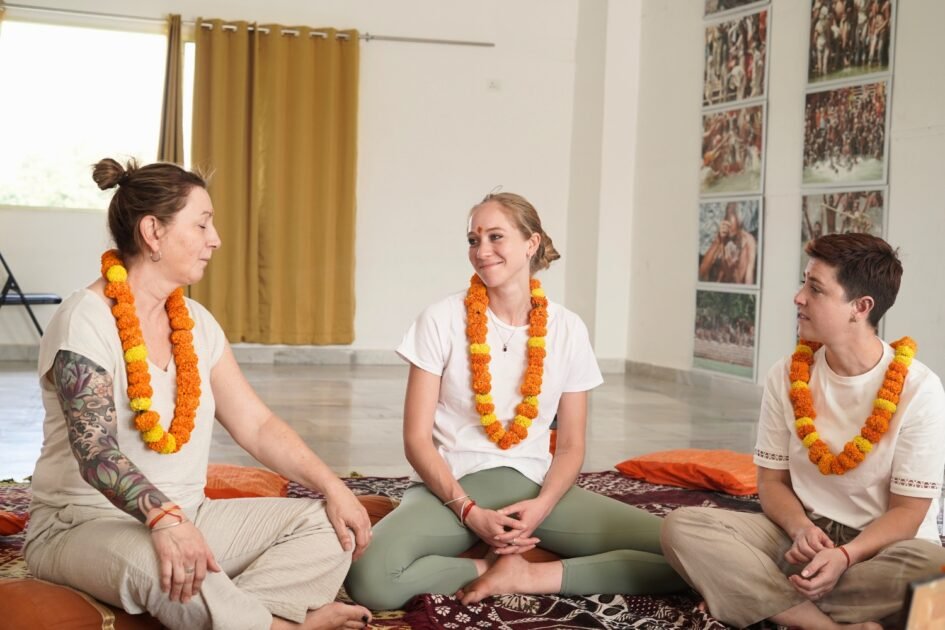
Conclusion: Say Yes to the Journey
Doing your first YTT in Rishikesh isn’t just about getting a certificate. It’s a call — to deepen your spiritual practice, step into your power, and connect with yoga beyond the mat.
You’ll live simply, wake up early, challenge your body, meet your ego — and come out the other side transformed.
Rishikesh is not just the Yoga Capital of the World by name. It’s a place that invites you to embody yoga — not just as a practice, but as a way of life.



Leave a comment: